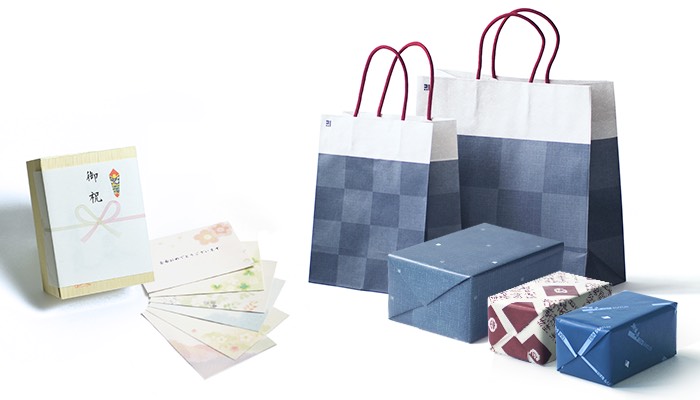- Belgium comes to Yamashita Park
- Residential Villa in Phuket Entices Remote Workers With Long-Stay Rates
- Rare pieces of French glass art at the Mirai Museum of Art
- Feast on fresh fish and seafood at the 2024 ‘Sakana’ Festival
- Would you like to ride in a Louis Vuitton gondola lift?
- Naked Snow Aquarium
- Festive lights at Yomiuriland will get you feeling the holiday vibes
Gift Giving Tradition In Japan

When my mom and sister came from Canada to visit my wife and I here in Tokyo a couple of years ago, it was fun, albeit a bit stressful. But in the end we all survived the experience. On the day that they left we wanted to call a taxi to our apartment building to take us to the Narita shuttle-bus rendezvous point, but we didn’t know how to, so we asked our building manager for help. Afterwards, my wife suggested that we give him a small thank-you gift for his efforts, so we did.
That got me to thinking. First of all, back in Montreal calling a cab would certainly be much easier, but in the event that someone did help us, would I buy him/her a gift? No.
But I am no longer in Montreal, nor have I been for the last five years, so I decided to investigate Japan’s gift giving culture.
Historically
Okurimono, Japan’s social ritual of gift giving, has existed for centuries. Prompted by the feudal concept of giri, one’s moral duty and social obligation, as well as the belief that in such an interdependent society, debts must literally be paid off, occasions for giving and receiving abound. Used to express gratitude for previous, ongoing, and future favors, to show respect for one’s superiors, or in return for receiving gifts themselves, Japanese people not only take the time but make concerted efforts and spend significant amounts of money on gifts.
Officially, Japan recognizes two ritual gift-giving seasons: ochuugen (mid-year) in July, and more importantly oseibo (year-end) in December. Both coincide with the times when most employees receive their mid-year or year-end bonuses. Ca-ching!
During ochuugen and oseibo people and businesses alike take the opportunity to show their appreciation for the patronage and assistance they previously enjoyed. Coincidentally, it’s also the time when stores large and small make available a wide variety of intricately and beautifully wrapped items, modestly starting at about ¥3,000 with the sky being the limit, with individual spending habits dependent primarily on your relationship, business or personal, to the recipients.
Traditionally popular mid-year and year-end gifts include gourmet foods and beverages, such as ham, nori (seaweed), canned fruit, boxed melons and grapes, coffee, and beer; but high-quality towels, soaps, and other personal effects are equally appropriate.
Perhaps you are sending something to another company by way of an introduction, or after having had a promising meeting or concluded a successful business transaction – then your gift should be something consumable and sharable, such as premium alcohol (whiskey or scotch), coffees, teas, cakes, chocolates, or fruits.
Or, if your gift is of a more personal nature, then department store gift certificates or book, beer, restaurant and other vouchers or prepaid cards are also widely given, and graciously accepted, as they are more flexible to use and less cumbersome to handle.
Weddings and Funerals
Personally I enjoy receiving money, but I loathe giving it, as I believe it lacks originality and effort. In Japan there are three common types of monetary gifts: for weddings, condolences, and o-toshidama.
Presented in decorative envelopes called shugi bukuro, wedding gifts can range from ¥10,000 to ¥60,000 or more (in crisp, new bills) but should never be ¥40,000 as the Japanese word for “four” or “shi” sounds eerily close to the word for ‘death’. Before presenting it, write your name and the gift amount on the envelope using a felt, Japanese-style calligraphy pen. In return, you will probably receive tableware, towels or other tokens of appreciation from the hosts at the reception’s end.
When someone dies, koden, or condolence gifts, are given in bushugi bukuro, or funeral money envelopes. Similar to wedding envelopes, which are usually adorned with red and white ribbons and knots, condolence envelopes traditionally use the colors black and white. These are presented at either the wake or funeral itself, and after the 49-day Buddhist grieving period has ended, it is customary for the bereaved to return the gesture, albeit in a more modest fashion.
O-toshidama is a Chinese custom of giving children pocket money or gift coupons in decorative, red packets on New Year’s Day. Dating back to the Edo period, large stores and wealthy families would give out a small bag of mochi and a mandarin orange to spread happiness all around. The amount of money given depends on the age of the child but they tend to be similar so no one child ever feels slighted.
Omiyage and Beyond
Contrary to the way westerners on vacation buy souvenirs for family, friends and colleagues, in Japan it used to be customary for co-workers to give the vacationer, especially those traveling internationally, a small sum of money to be spent on omiyage, or a souvenir, which could then be shared once they returned. These days, vacationers are still expected to bring back gifts, but are unlikely to be given the money to purchase it. So important is the concept of omiyage, that for those forgetting to purchase something abroad, some airport shops, as well as others located in city centers, now sell gifts that are specially wrapped to look as if they were purchased abroad. Strange, but true!
Dos and Don’ts
The act of giving or receiving a gift is only a part of Japan’s age-old ritual. It is also the manner in which the gift is presented to, and accepted by, a person that concludes this small but important ceremony.
To properly give someone a gift it is customary to bow slightly while extending the gift in both hands and politely saying, “douzo, otsukai kudasai.” (Lit. ‘Please use it’).
But before you give, make absolutely sure of the following: avoid the numbers ‘four’ (death) and ‘nine’ (hardship); if giving money, make sure it is cash only and that you use the proper envelope; do not use any sixteen-petal chrysanthemum symbols, as this is exclusively reserved for the Royal Family’s imperial crest, and further avoid anything to do with a badger or fox, as they symbolize a scavenger and cunning, and are not looked well upon.
If you are on the receiving end, it is equally customary to initially hesitate to accept the gift so as not to appear too greedy, eventually succumbing and politely replying, “itadakimasu.” It is further customary for the person receiving the gift to leave it unopened until the person who gave it has left, unless special circumstances dictate otherwise. When you do eventually open it, it should be done delicately, to savor the experience as well as the gift itself. In return, a short thank-you note or yet another gift, valued at about half that of what you received, will suffice.
Looking a Gift Horse in the Mouth
Some Japanese have counted between forty-three and eighty-five separate and distinct seasonal and ceremonial gift-giving occasions. With only 365 days in a year, that means, on average, you should probably be giving or receiving some kind of gift every week. Whoa! No wonder shopping has become Japan’s unofficial national pastime – one that is universally practiced, at a variety of levels, from the casual window shopper to the hardcore veteran.
Gone Home
During my family’s visit here, we had the chance to meander up and down Omotesando Dori, where we popped into the Ralph Lauren emporium for just a peek. While my sister wandered around gawking, mouth agape and practically drooling, my mom took a moment to speak with one of the salespeople. She politely asked him how Japanese people could shop so much. He paused to choose his words carefully, then replied that Japanese don’t merely enjoy shopping; – it’s their ‘obsession’.
So, while I am grateful that our then- apartment manager did help us get a cab, and we did give him a small, beautifully wrapped box of sembe rice crackers as a token of our appreciation, to date, he has yet to give my wife and I something in return. And since we no longer live there, this will most likely never happen. Or maybe he’s just not in tune with Japan’s penchant for okurimono, ne?
















